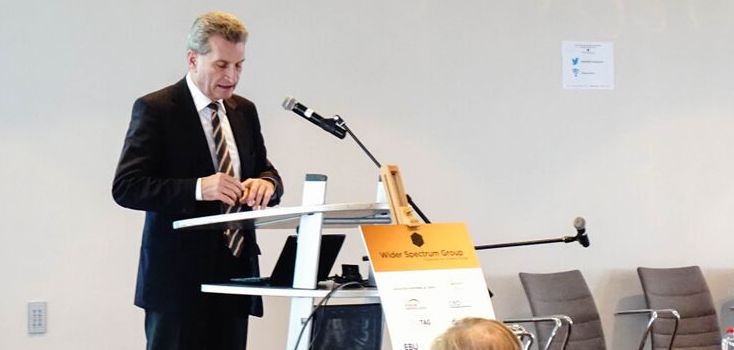Wider Spectrum Group endorses Lamy ’20-25-30’ roadmap for future of the UHF Band
26 October 2015
On 22 October, in the run-up to next month’s World Radiocommunications Conference (WRC-15) in Geneva, audiovisual industry, trade union and viewers’ representatives voiced their broad support for the recommendations on the future use of the UHF Band set out by former WTO chief Pascal Lamy during a high-level conference in Brussels.
Speaking in the opening panel discussion, EBU Director General Ingrid Deltenre said: “The 20-25-30 model set out in the Lamy recommendations is a roadmap for radio spectrum policy deciders. I am optimistic about a ‘no change’ decision at WRC-15 regarding the allocation of sub-700 MHz frequencies – and I urge the European Commission to follow through next year in its strategy for the UHF Band. Ensuring that sub-700 MHz frequencies are available for DTT until at least 2030 is a long-term guarantee for Europe’s cultural and creative sector and a strong incentive for further investment and innovation.”
She added: “However it is important that the so-called ‘flexibility’ option is not understood as an open door to co-primary allocation – sharing of spectrum between mobile and broadcast - below 700 MHz.”
Conference organiser the Wider Spectrum Group, which counts the EBU amongst its members, gave the floor to Pascal Lamy to comment on the way forward he proposed last year, and invited Commissioner for the Digital Economy and Society Günther Oettinger to give his view.
Pascal Lamy said: “The consistency of spectrum policies needs to be ensured at EU level. The good news is that the 20-25-30 model is now the backbone of EU spectrum policy”.
Commissioner Günther Oettinger said: “The creation and distribution of audiovisual content is one of the main drivers of the digital economy. I want a thriving audiovisual sector in Europe, developing in a disruptive digital age. Reaching 250 million Europeans, Digital Terrestrial Television is an integral part of the European audiovisual model”. He added: “Audiovisual services will have priority for sub-700 MHz frequencies. Spectrum has become too important to be linked just to technical considerations.”
Estonian MEP Kaja Kallas, who shared her surprise in learning that Europeans watch on average more than 3 hours of TV per day, highlighted that the needs of consumers need to be taken into account in spectrum policy.
The Conference entitled ‘Free-to-Air | Free to Create | Free to Grow’ saw representatives of diverse sectors call for an EU spectrum policy that comprehensively addresses the realities of content production and distribution, including the wider downstream impact of spectrum allocation.
The Wider Spectrum Group (WSG) brings together several organisations representing civil society as well as employee and employer representatives. Together these organisations represent the interests of listeners and viewers, workers and businesses in the field of audiovisual, radio, live performance, programme-making and special events. WSG members share a common view on the need to ensure European and national policies regarding frequency allocation preserve the potential for European growth, innovation and sustainable employment.

Commissioner for the Digital Economy and Society Günther Oettinger


